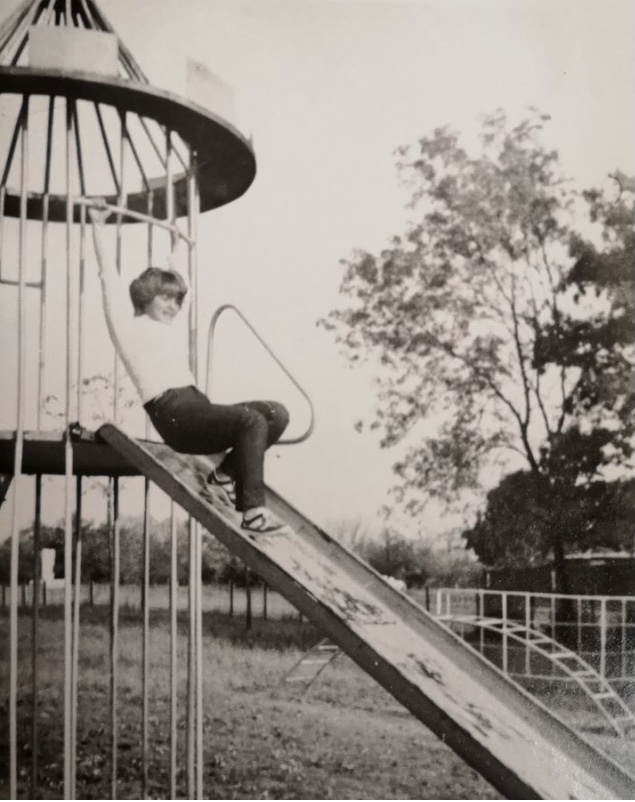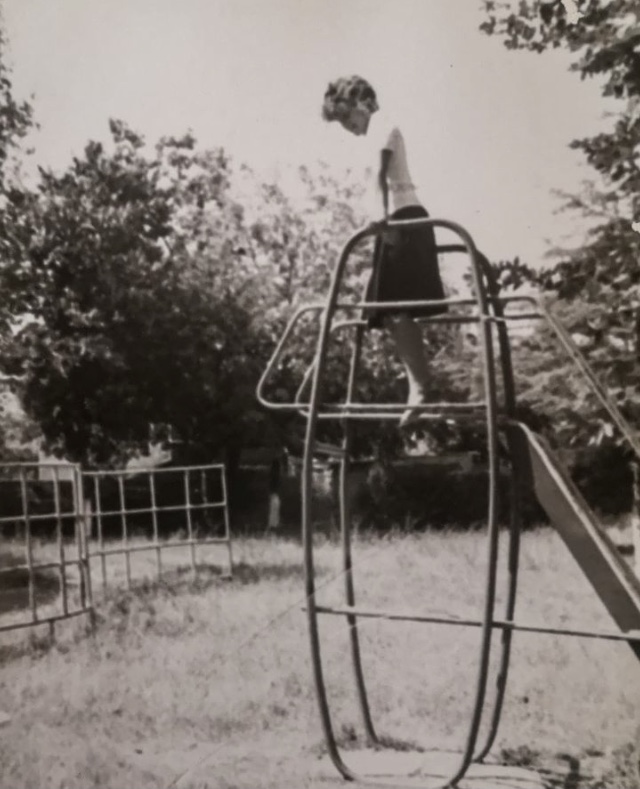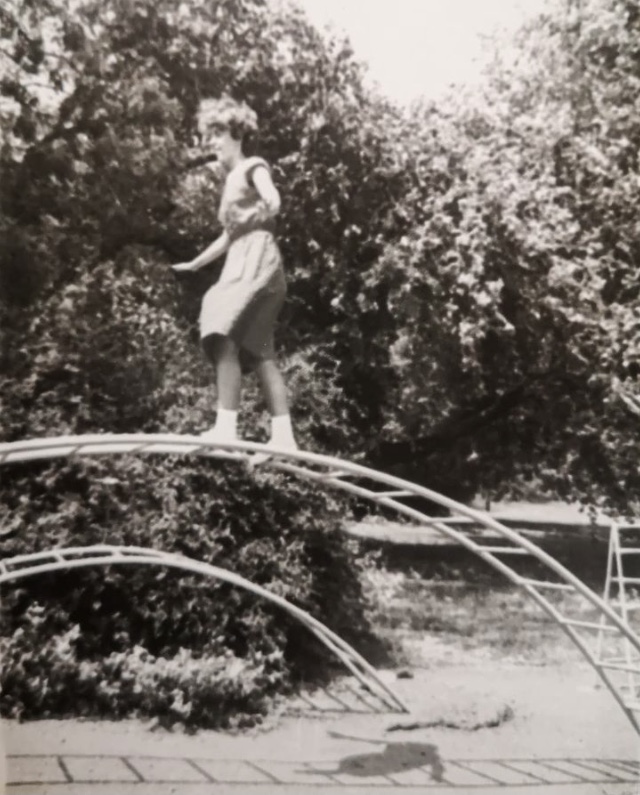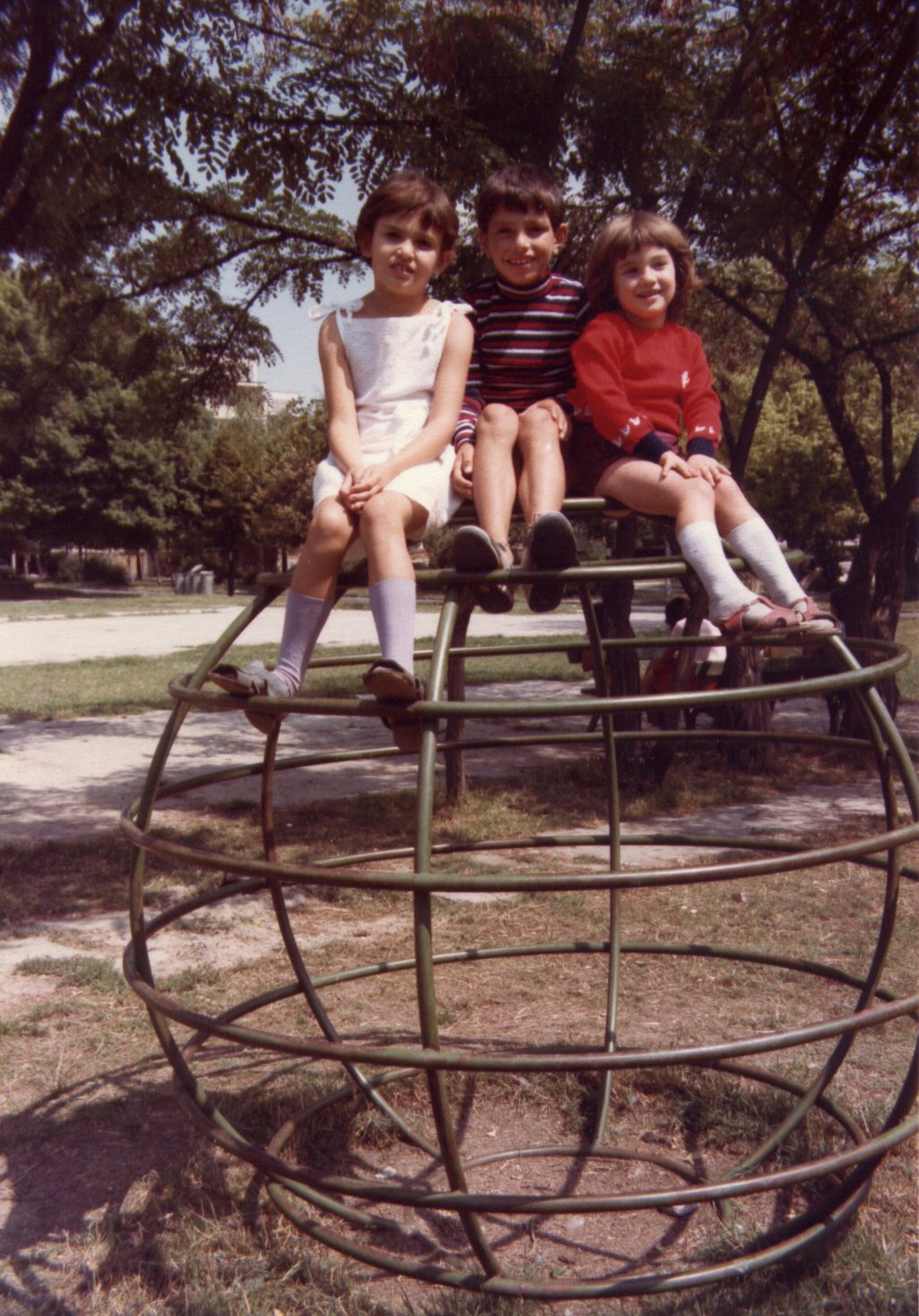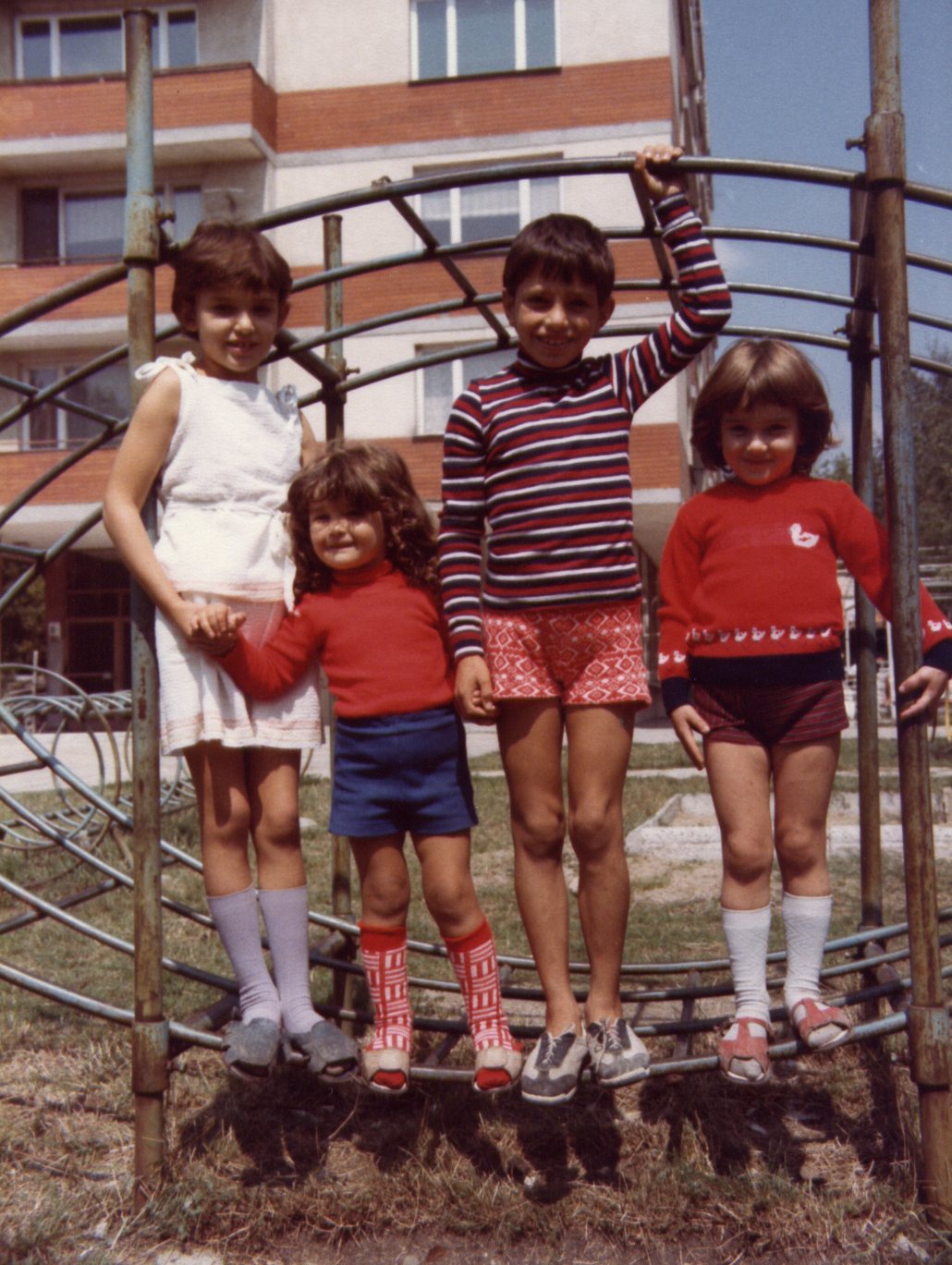
Brief history of climbing frames for children
Playgrounds and outdoor play equipment for children began to appear in various cities around the world after the end of World War II as part of a larger renewal of the urban environment.
In this text, I will look at examples that are most closely related to the climbing frames in Bulgaria – at least in terms of aesthetic qualities.
We can safely say that the father of playgrounds is the architect Aldo van Eyck, who worked in the Department of City Development of Amsterdam (1947 – 1978). His playgrounds appeared after World War II. The first playground was built in 1947 as an experiment – it consisted of a sandpit with a wide rim, four round stones and tumbling bars. The playground was a success, followed by new playgrounds that quickly found their place in abandoned parts of the city, among parks and gardens. For van Eyck, the playgrounds were a way to test his ideas about architecture. They were diverse in size and shape and successfully integrated into the urban fabric. All playgrounds were different, but were made up of a certain number of similar repeating elements (Fabrizi, 2018; van den Bergen, 2002).
In thirty years, Aldo van Eyck created about 700 playgrounds, of which only seventeen can be seen today – be it in the original form or just partially.


Looking at the history of metal climbing frames in the form that we know them from our socialist childhood, they are found in many former socialist countries. In the Soviet Union, for example, they appeared in the 60s, when the very idea of what children’s play spaces should be has greatly changed along with the changes happening in architecture and urban planning of that time. Previously the playgrounds were enclosed spaces and a very precise regulation of what they should be existed, often the activities that took place there were led by educators and pedagogues. In the 60s the playgrounds became open and free. These sites fit very harmoniously into the vast internal block courtyards of the new prefabricated multistory buildings. Facilities for children of different ages were provided. The experimental microrayon Novye Cheremushki is the place where prototypes of various equipment appeared, to be spread later across the whole of USSR. Designers and architects created climbing frames in the shape of a giraffe or an elephant slide. Unsurprisingly however, the favorite and most popular form of play equipment was the rocket (Bronovitskaya, 2017).




There are no known authors of this equipment, as it was developed by specially assigned collectives within the state architectural bureaus. Whenever catalogues of equipment existed, they were intended at installation workers and users. Such were the publications of Efim Minskin “Playgrounds for children”, 1969 and “Games for children and adolescents”, 1976 (Gorokhov, 2022).
Around the 80s it became clear that the very atmosphere of the new multistory buildings has turned into a very uniform living environment. Most playgrounds had also become very standardized with uniform mass-produced play structures (Bronovitskaya, 2017).


In East Germany, climbing frames and playgrounds emerged as an alternative to the street as a place for play, which by the time was becoming increasingly dangerous due to the rapid motorization of cities. Decisive parameters for playgrounds were accessibility and distance to residential blocks. Standards and guidelines for playground design were created. The plan of the playgrounds used the basic principles of town planning and landscape design of the time.
A playground usually consisted of some space, fencing and play equipment spaced apart. Play equipment and fences were often made of steel, which was probably influenced by the requirements for durability, low cost, as well as formal aspects for a modern appearance. Pipe railings looked transparent and were also used for playing or sitting. As a rule, they were painted with bright primary colors, as well as in combinations of colours.
The facilities were mainly produced locally by some steel manufacturer. No specific makers or designers of East German play equipment are known, although recurring elements can be seen. Such, for example, are the climbing bridges, as well as the climbing mushroom, which has become a symbol of children’s playgrounds from East Germany (Fibich, 2016).


As a rule, playgrounds in East Germany were very uniform, and exceptions were very rare. There were several reasons for returning to the same items frequently. On the one hand, it was the economic deficit that did not allow greater diversity. On the other hand, since the late 1950s, standardization and unification have been the politically desired features of East German town planning in order to satisfy mass demand – but also to express the desired leveling of social differences (Fibich, 2016).
After the end of the 50s, the desire to offer something individual to the uniform playgrounds led to the appearance of the so-called play sculptures made of steel and concrete. In Leipzig and Dresden, slides of baby elephants, hippopotamus and dinosaurs are preserved to this day.

This elephant-slide was mass-produced by the manufacturer “Kunst am Bau” in Drezden. Designed in 1962 by the sculptores Vinzenz Wanitschke, Johannes Peschel and Egmar Ponndorf, and its production began in 1965.
History of metal climbing frames in Bulgaria
The history of climbing frames in Bulgaria can be compared to those of the former Soviet Union and German Democratic Republic described above. The climbing frames became an integral part of the internal block courtyards of the new post-war construction. They were vastly used in kindergarten courtyards as well. The well-known spheres, rockets, elephants, houses, boats seem to have no known author.

In the 70s prof. Serafim Serafimov started designing playgrounds. He was the founder of the faculty “Design of Children’s Environment” at the National Academy of Art in Sofia, associate professor and professor at the National Academy of Art (since 1969) and “Design of Children’s Environment” (since 1988-9); teacher at New Bulgarian University since 1994.
Prof. Serafimov developed “Equipment for outside spaces for play and recreation” – a system of modular elements made of the already well-known metal pipe structures.
Prof. Serafimov continued with several more developments, and with his designs he participated in a series of exhibitions, for example in the exhibition “Aestheticization of the urban environment” in “Shipka 6” gallery in 1978, as well as in the first national exhibition “Design in the Children’s World” in 1981.
On this development, Prof. Serafimov worked together with the Economic Association of the Ministry of Education “Uchtehprom”. The exhibition presented about one hundred and ten exhibits – equipment for children’s playgrounds and kindergartens. Larger elements such as library corners, canopies, windbreaks, some climbing frames, sandboxes and others were not included in the exhibition due to their size (Ivanova, 1981).

The variety of elements that were part of the designer’s developments is impressive. In the 1980s, Prof. Serafimov’s designs began to be mass-produced, and some of them can still be found in places in Sofia.
Similarly to East Germany, the so-called play sculptures start to appear in Bulgaria – the well-known concrete camels, horses, elephants, etc. Their authors are Iliya Ikilyulev and Georgi Gergov, who created the mosaic animals in the late 1970s and early 1980s. The elephant-slide in Borisova Gradina Park has become a symbol of the space, giving the name of the playground even today.
Having traced the history of climbing frames in Bulgaria, let’s now look at their possible future.
Examples of conservation of climbing frames and play sculptures around the world
Aldo van Eyck’s playgrounds in Amsterdam
In 2016, graphic designers Denisa Kollarová and Anna van Lingen published the book “Aldo van Eyck, Seventeen Playgrounds” dedicated to Aldo van Eyck’s seventeen playgrounds or elements of them that can still be found in Amsterdam. Their project continued with a travelling exhibition of one of van Eyck’s original climbing frames, numerous lectures and the creation of the online platform www.seventeenplaygrounds.com, where one can find a map with the location of the playgrounds and an extensive archive with publications related to playgrounds. As the designers themselves share, today, six years later, Aldo van Eyck’s playgrounds in Amsterdam’s Zuid neighborhood are protected thanks to their work. Some equipment has been presented at the Rijks Museum in Amsterdam. “In general, the situation is much better than in 2014. There is more awareness thanks to our publications, lectures and exhibition. People appreciate the facilities more than they did in the beginning” (from a conversation with the designers).

Climbing frames in Dresden
The following story can be observed in Dresden. The distinctive mushroom or rocket-shaped climbing frames from before 1989 became a great rarity in the city after 2014, when they began to be dismantled due to new safety regulations. This also happened on Aechner street, where many old climbing frames were located.
In 2015, a survey was conducted among the children, youth and adults of the neighborhood regarding the future of the climbing frames there. As the architect Florian Ehrler tells, “the feedback, especially from children, has always been that many identify with the old facilities, remember them from the past and want to preserve them”.
The Technical Inspection Association in Germany (TÜV) and the organizations for the protection of monuments approved the decision to keep the old climbing frames. The equipment was renovated: galvanized, the welds repaired and the structures nailed deeper into the ground. The renovated climbing frames were situated in a new location together with some new steel play equipment. So far the playground has been functioning very well.
Thus due to the involvement of citizens in the decision-making process, the modern history of the East German climbing frames is preserved at this playground in Dresden.

Play sculptures in Germany
In his article “Ostmoderne Spielskulpturen – robuste Spielobjekte aus vergangener Zeit”, Peter Fibich examines the various examples of play sculptures in Germany, focusing his attention on the determined citizens who want to preserve the old play sculptures along with the emotions and memories they carry. This is also the story of Eisenach, where citizens are fighting for the elephant slide in their neighborhood to be preserved and renovated. This is the same slide already shown in the text above.

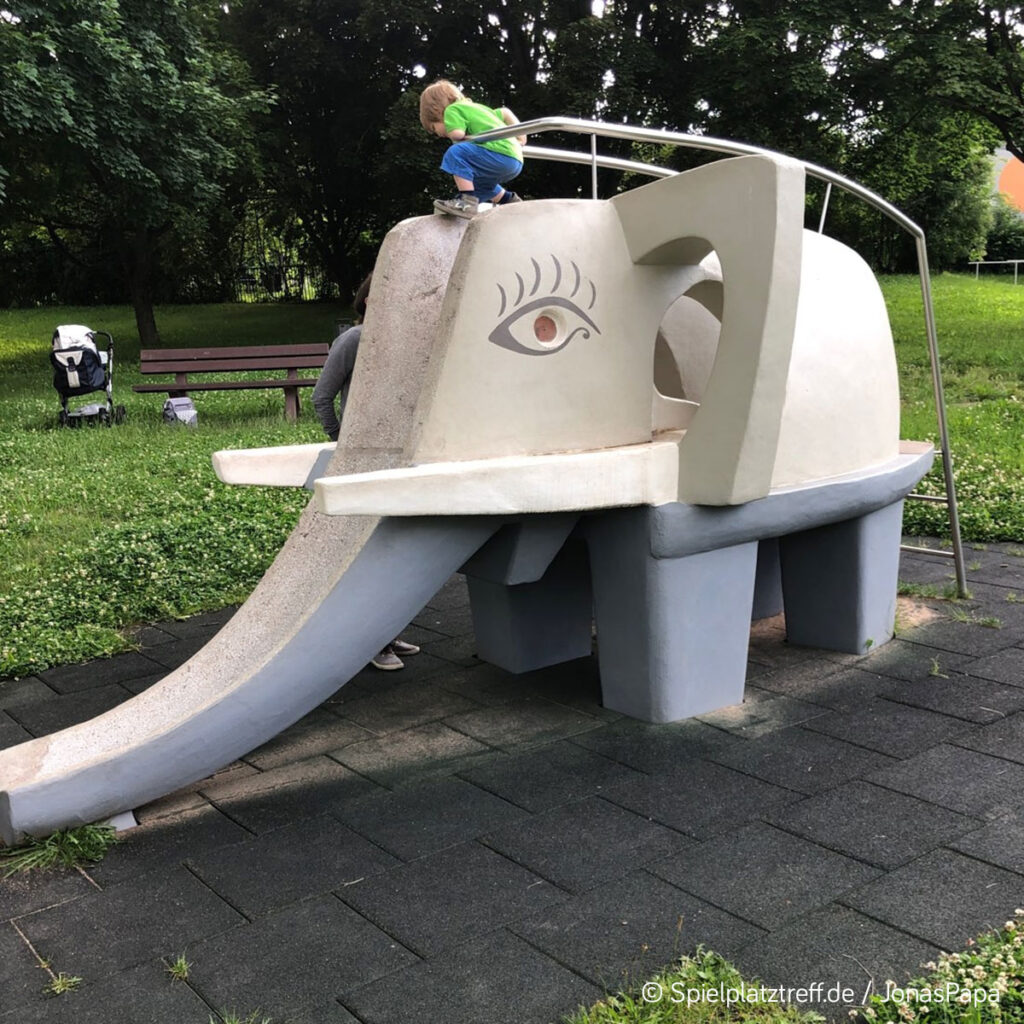
Fibich (2022) also shares:
In many places, the conservation of the play sculptures has started and they are already mentioned as individual objects in the lists of monuments. The awareness prevails that even these small objects deserve to be preserved. In fact, they are relics of the domestic culture of the second half of the last century and can communicate a lot about the aesthetic and pedagogical views of the time. And they tell stories because personal memories are attached to them.
In Bulgaria, the play sculptures, especially the climbing frames, are preserved to this day. Some deserve to be included in the list of monuments, others perhaps just to be maintained so they can continue to carry the everyday memories of the city.
References
Fabrizi, Mariabruna (2018) “Human Structures and Architectural Archetypes: Aldo Van Eyck’s Playgrounds (1947 – 1978)“, https://socks-studio.com/2018/02/11/human-structures-and-architectural-archetypes-aldo-van-eycks playgrounds-1947-1978/
van den Bergen, Marina (2002) “Playgrounds by Aldo van Eyck”, https://www.archined.nl/2002/07/playgrounds-by-aldo-van-eyck/
Bronovitskaya, Anna and Garage Museum of Contemporary Art (2017), “Russian Playgrounds”, http://architekturfuerkinder.ch/russia/
Gorokhov, M et al (2022) “Soviet Playgrounds. Playful landscapes of the Former USSR”, Zupagrafika
Fibich, Peter (2016) “Von Kletterpilzen und Rutschelefanten”, http://www.freiraumkonzepte.com/spielplaetze-in-der-ddr
Burkhalter, Gabriela (2020) “Spielplätze und skulpturen in den DDR: industriell und individuell”, http://architekturfuerkinder.ch/ddr/
Ivanova, Nezabravka (1981) “Design for the child”, p.27-29, Promishlena estetika. Dekorativno izkustvo.1981/3.
Hein, Dirk (2017) “Da werden Erinnerungen wach: Hier steht Dresdens letzter DDR Spielplatz”, https://www.tag24.de/amp/spielplatz-dresden-ddr-osten-klettern-aachener-strasse-285671
Fibich, Peter (2022) “Ostmoderne Spielskulpturen – robuste Spielobjekte aus vergangener Zeit”, https://www.spielplatztreff.de/blog/ostmoderne-spielskulpturen-robuste-spielobjekte-aus-vergangener-zeit/

